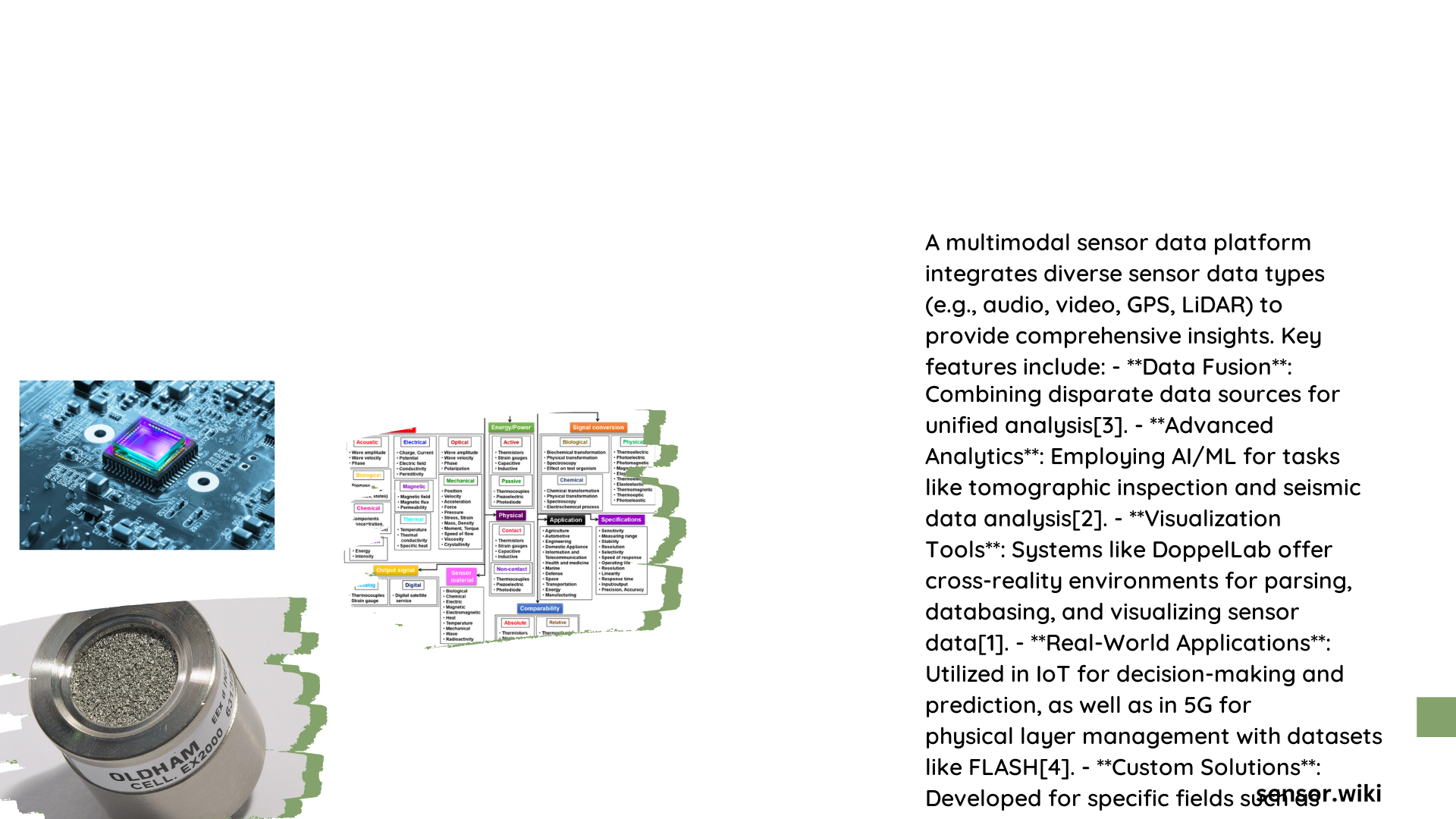A multimodal sensor data platform represents a sophisticated technological ecosystem that integrates diverse sensor technologies, enabling comprehensive data collection, fusion, and intelligent analysis across complex environments. By seamlessly combining multiple sensor inputs, these platforms transform raw sensory data into actionable insights, revolutionizing decision-making processes in fields ranging from autonomous systems to healthcare and industrial monitoring.
What Are the Core Components of a Multimodal Sensor Data Platform?
Multimodal sensor data platforms comprise intricate technological architectures designed to capture, process, and analyze information from multiple sensor types simultaneously. These platforms leverage advanced computational techniques to integrate heterogeneous data streams, providing unprecedented insights into complex systems.
How Do Sensors Contribute to Data Collection?
Sensors play a critical role in multimodal data platforms by capturing different types of environmental and contextual information:
| Sensor Type | Primary Function | Typical Applications |
|---|---|---|
| Accelerometers | Motion Detection | Wearables, Robotics |
| Gyroscopes | Orientation Tracking | Navigation Systems |
| GPS | Geospatial Positioning | Transportation, Logistics |
| Temperature Sensors | Thermal Monitoring | Industrial Processes |
| Pressure Sensors | Force Measurement | Medical Devices |
What Challenges Exist in Sensor Data Integration?
Key challenges in multimodal sensor data platforms include:
- Data Heterogeneity
- Varying data formats
- Inconsistent sampling rates
-
Different measurement scales
-
Synchronization Issues
- Clock drift
- Temporal misalignment
-
Latency variations
-
Computational Complexity
- High-dimensional data processing
- Real-time analytics requirements
- Advanced machine learning integration
How Are Advanced Algorithms Implemented?
Sophisticated algorithms drive multimodal sensor data platforms:
- Bayesian Filtering: Probabilistic data fusion
- Deep Learning Models: Complex pattern recognition
- Kalman Filtering: State estimation and prediction
- Ontological Reasoning: Contextual data interpretation
What Are the Performance Metrics?
Performance evaluation involves multiple critical metrics:
- Latency: Minimal time between data collection and analysis
- Accuracy: Data completeness and consistency
- Sampling Rate: Uniform data collection intervals
- Computational Efficiency: Processing speed and resource utilization
What Are the Cost Considerations?
Implementation costs vary based on complexity:
- Hardware: $100 – $5,000 per sensor system
- Software Development: $10,000 – $250,000
- Maintenance: Annual costs ranging from $5,000 to $50,000
What Industries Benefit Most?
Multimodal sensor data platforms demonstrate transformative potential across sectors:
- Autonomous Vehicles
- Healthcare Monitoring
- Industrial Automation
- Smart City Infrastructure
- Aerospace and Defense
Conclusion

Multimodal sensor data platforms represent a cutting-edge technological frontier, enabling unprecedented insights through intelligent sensor integration and advanced computational techniques.
